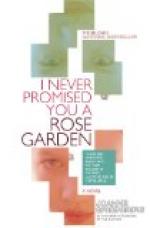If the bed is on a slight slope, so much the better. Dig a shallow trench of six or eight inches around it to carry off the wash. An abrupt hillside is a poor place for such a bed, as the finer seeds will inevitably be washed out in the heavy rains of early summer. If the surface soil is lumpy or full of small stones that escape fine raking, it must be shovelled through a sand-screen, as it is impossible for the most ambitious seed to grow if its first attempt is met by the pressure of what would be the equivalent of a hundred-ton boulder to a man.
It is to details such as these that success or failure in seed raising is due, and when people say, “I prefer to buy plants; I am very unlucky with seeds,” I smile to myself, and the picture of something I once observed done by one of the so-called gardeners of my early married days flits before me.
The man scraped a groove half an inch deep in hard-baked soil, with a pointed stick, scattered therein the dustlike seeds of the dwarf blue lobelia as thickly as if he had been sprinkling sugar on some very sour article, then proceeded to trample them into the earth with all the force of very heavy feet. Of course the seeds thus treated found themselves sealed in a cement vault, somewhat after the manner of treating victims of the Inquisition, the trickle of moisture that could possibly reach them from a careless watering only serving to prolong their death from suffocation.
The woman gardener, I believe, is never so stupid as this; rather is she tempted to kill by kindness in overfertilizing and overwatering, but too lavish of seed in the sowing she certainly is, and I speak from the conviction born of my own experience.
When the earth is all ready for the planting, and the sweet, moist odour rises when you open the seed papers with fingers almost trembling with eagerness, it seems second nature to be lavish. If a few seeds will produce a few plants, why not the more the merrier? If they come up too thick, they can be thinned out, you argue, and thick sowing is being on the safe side. But is it? Quite the contrary. When the seedlings appear, you delay, waiting for them to gain a good start before jarring their roots by thinning. All of a sudden they make such strides that when you begin, you are appalled by the task, and after a while cease pulling the individual plants, but recklessly attack whole “chunks” at once, or else give up in a despair that results in a row of anaemic, drawn-out starvelings that are certainly not to be called a success. After having tried and duly weighed the labour connected with both methods, I find it best to sow thinly and to rely on filling gaps by taking a plant here and there from a crowded spot. For this reason, as well as that of uniformity also, it is always better to sow seeds of hardy or annual flowers in a seed bed, and then remove, when half a dozen leaves appear, to the permanent position in the ornamental part of the garden.




